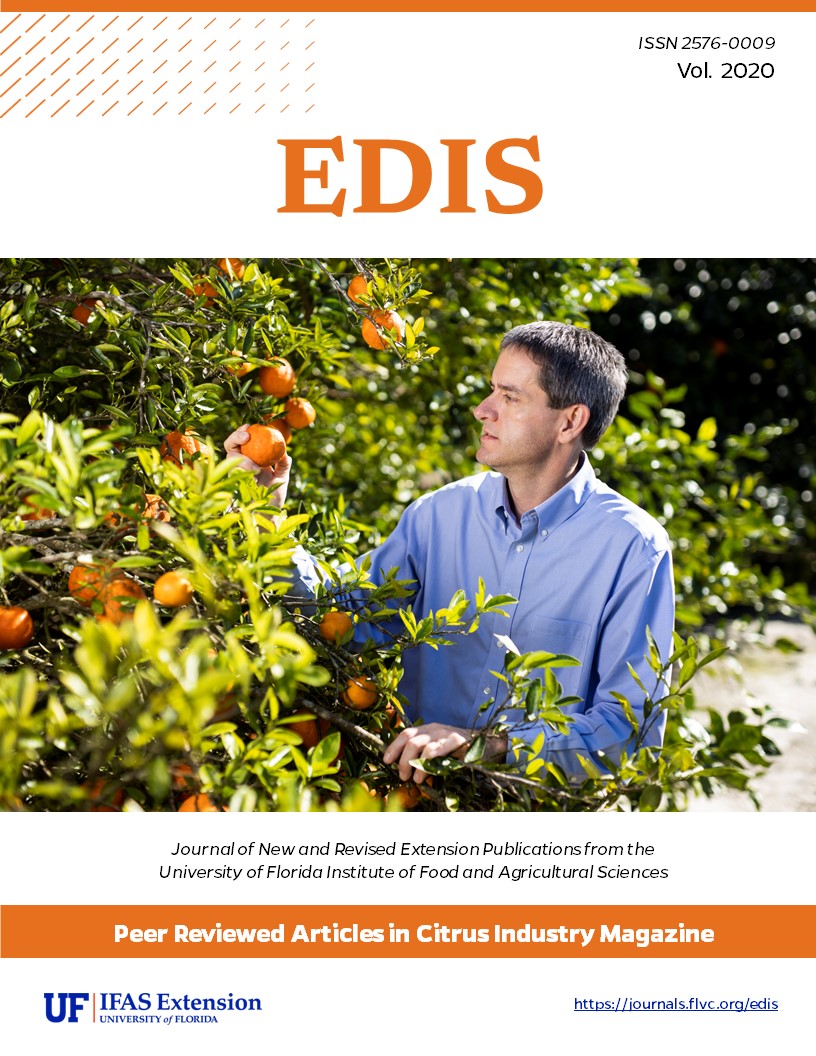Abstract
Nutrient management is important for citrus production and regular nutrient assessment should be conducted to optimize nutrient balance and prevent deficiencies or over fertilization. Optimal nutrition is important for tree health and productivity and can improve tolerance to stresses and diseases. Good nutrient management requires regular field monitoring to identify problems and examine crop responses to management. For a detailed analysis of macro- and micronutrients, leaves need to be collected and sent to a specialized laboratory which is time-consuming and costly. Although it is recommended to conduct nutrient analyses in July and August after the spring flush (see https://edis.ifas.ufl.edu/pdf/SS/SS53100.pdf), more frequent analyses of leaf nutrients may be necessary to determine deficiencies that are associated with huanglongbing or other biotic and abiotic factors during other times of the year. Additional analyses may also be necessary where responses to novel management practices need to be monitored. However, frequent collection and analysis of leaves for accurate assessment of the plant nutrient status is economically not feasible.
In addition to being time-consuming and costly, leaf nutrient analysis is prone to human error because of inconsistencies and bias during leaf sampling and during the analysis process, which can compromise interpretation and relevance of the data. Faster and cheaper alternatives to conventional nutrient analysis methods are currently being developed at a rapid pace.
New technologies like unmanned aerial vehicles (UAVs or drones) and artificial intelligence (AI) can be utilized to develop a more efficient methodology for determining leaf nutrient concentrations of citrus trees and improving the speed of data collection and data consistency. At the UF/IFAS Southwest Florida Research and Education Center (SWFREC) we developed a non-destructive method that can be used to determine citrus leaf nutrients quickly and efficiently and to create nutrient or fertility maps that are compatible with variable rate technologies (e.g., for variable rate fertilizer applicators). This novel method can help overcome some of the limitations of the traditional methods of leaf nutrient analysis or complement them.

